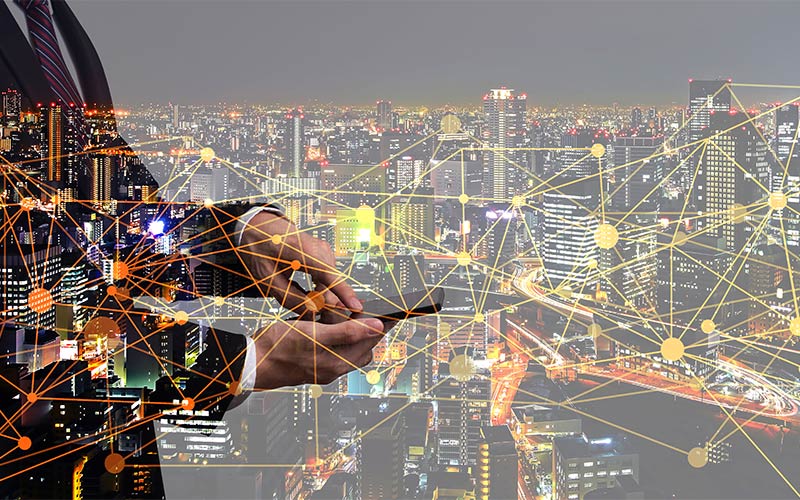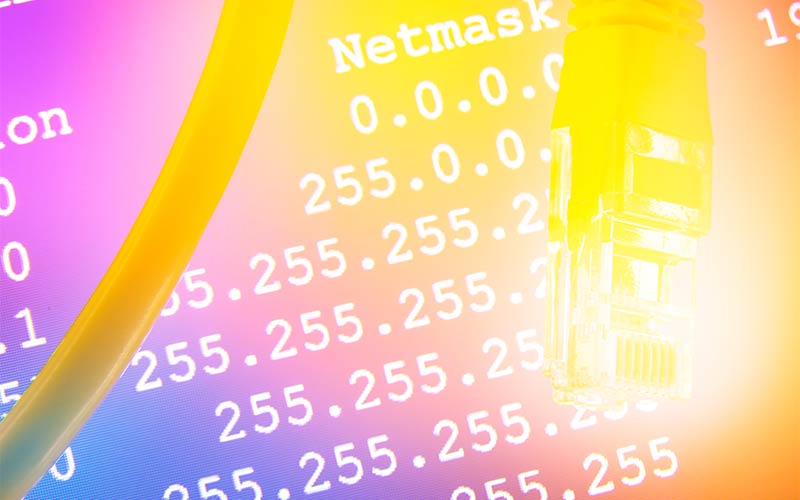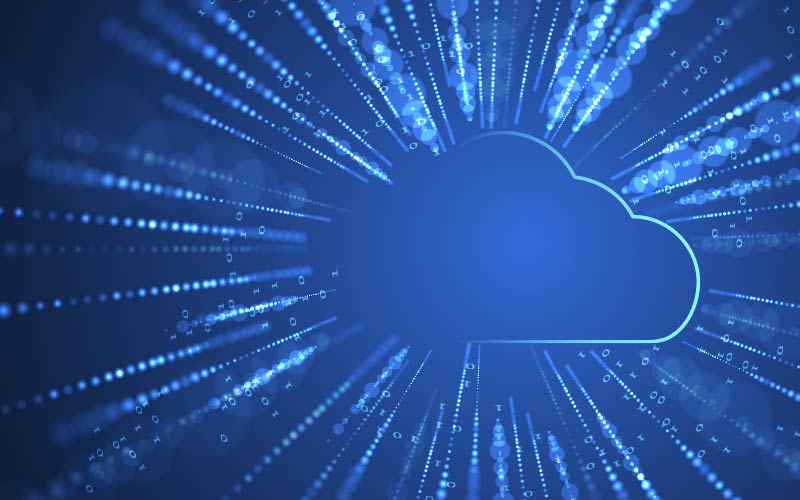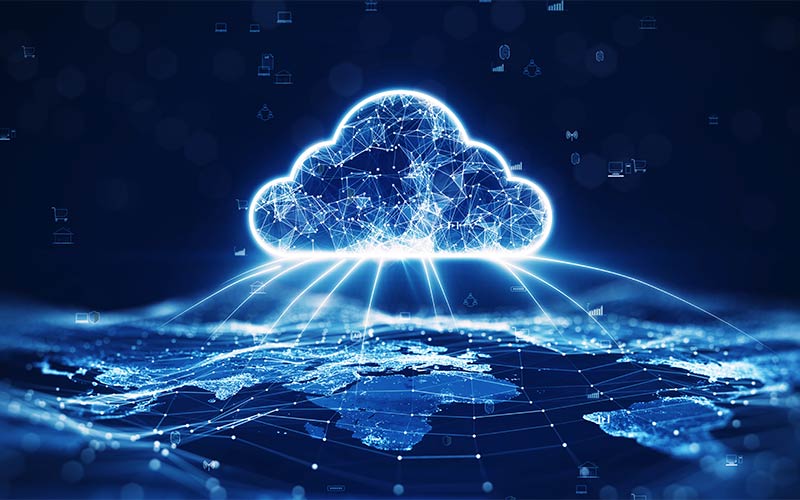What are IP Addresses? IP addresses are fundamental to the digital infrastructure of any business…

Edge and Cloud Computing
Everyone has heard the term cloud computing these days as it becomes increasingly ubiquitous in both business and consumer applications. That said, not nearly as many are familiar with edge computing, despite the term frequently being heard in the same breath as “the cloud” in recent years. A key driver for this growing popularity is the explosion of connected devices (i.e. smartphones, Internet of Things (IoT) devices, cameras) generating large amounts of data. Modern real-time applications (e.g. autonomous vehicles, industrial automation, virtual/augmented reality) often require immediate data processing, reduced latency, and improved response times- all of which have acted as a catalyst for edge computing’s expansion.
In this post we compare and contrast cloud computing with edge computing. We will identify pros and cons associated with each, exploring the ways they individually deliver additional value to your applications and the superpowers they provide when working in concert.
What is Edge Computing?
Edge computing is an architecture with a focus on moving compute power physically closer to where data is generated, typically incorporating an IoT device or sensor at the location. This practice of shifting the compute power to the “edge” of an organization’s network provides advantages for data sovereignty and data processing speeds, while also reducing the latency, bandwidth, and energy costs associated with transmitting large amounts of data to distant locales. In the simplest of terms, it positions the computing closer to the end user and the outside world.
Processing at the network’s edge keeps large datasets in what are frequently high performance computing environments, much closer to the end user and outside world. On one hand, this eliminates the need to traverse multiple network hops, cloud providers, and/or servers for that same function, and on the other hand avoids having to send large datasets or impractical computations to end users. These factors make edge computing an especially good fit for applications that incorporate today’s more modern technologies (e.g. artificial IntelligenceI, augmented/virtual reality, data science).
What are the benefits of Edge Computing?
Edge computing offers several benefits over traditional, centralized computing models:
- Low Latency: By processing data at or near the source, edge computing reduces the time that users spend waiting for data to be analyzed and acted upon, resulting in faster response times. This is especially helpful for real-time applications.
- Improved reliability: In many cases, edge computing can continue to operate even if the connection to the core cloud is lost, improving the reliability of the overall system.
- Reduced Bandwidth and Transmission Costs: By processing data locally, edge computing can reduce the amount of data that needs to be transmitted to a central location, thereby lowering bandwidth and transmission costs.
- Increased Security: By processing data locally, edge computing can reduce the risk of data breaches and protect sensitive information in many applications.
- Cost-Effectiveness: Edge computing often requires little or no pre-committed usage and allows the fine grained allocation of resources where they’re required, reducing the need for expensive hardware and IT infrastructure.
- Better Handling of massive data: Edge computing allows organizations to process, filter, and extract insights from data where it is generated, reducing the need to transmit large amounts of data to a cloud or data center. This can improve the performance and efficiency of applications that rely on large data sets. In addition, this can make it easier to comply with regional data protection regulations by performing processing in country.
- Privacy: Edge computing can often perform all computation on the edge device where it is generated, reducing or eliminating the need to send it to the cloud (or a data center), and inherently increasing the privacy and security of that data.
- Handling real-time data: Edge computing is particularly suited for real-time data processing and low latency applications where decisions must be made quickly (autonomous vehicles, industrial control systems, robotics, etc.).
What are the challenges associated with Edge Computing?
An edge computing architecture can present a number of challenges to your business, including:
- Limited resources: Edge devices typically have a fixed computational power and storage capacity, which may make it difficult to perform complex tasks or handle large amounts of data without physically augmenting the edge hardware.
- Connectivity: Edge devices may not always have a reliable or high-speed connection to the internet, which can make sending data to and from the cloud difficult.
- Security: Edge devices may be vulnerable to physical hacking and other security threats, as they may be deployed in remote or inaccessible locations.
- Scalability: As the number of edge devices increases, it can be cumbersome to manage and maintain them all, particularly if they are distributed across a wide area.
- Latency: While the latency between the edge computing device and the outside world is minimized, this may result in a large physical distance between the edge device and centralized cloud systems.. This can be problematic for applications that require frequent reference to centralized systems..
- Standards and compatibility: Edge devices may have wildly different hardware, operating systems, and software, adding complexity to compatibility and interoperability efforts.
What is Cloud Computing?
Cloud computing leverages clever software to combine the various segments of computing services – including servers with processors and RAM, storage devices, databases and networking – and marshalls these components into a malleable and resilient computing solution. The much misunderstood “cloud” does not run on different physical bits of silicon and metal than traditional computing devices, but rather combines and orchestrates those resources through software in order to deliver a whole product that is truly greater than the sum of its parts. In addition to allowing for fine-grained resource allocation (i.e. companies and consumers using only the exact resources they need), cloud computing allows for true elastic scalability and provides true high availability. With a true high availability architecture, a cloud service remains available (and with all its data intact) even when parts of a physical infrastructure inevitably fail.
Cloud computing providers host their services in data centers that are strategically located in a handful of major geographic regions, providing nearly limitless computing resources and allowing for remote access to data and applications. Customer organizations can then scale resources up or down as needed, reducing the need for large investments in hardware and IT infrastructure.
What are the benefits of Cloud Computing?
Cloud computing provides a variety of benefits, including:
- Scalability: Cloud computing allows for on-demand provisioning of resources, making it easy to scale up or down as needed.
- Cost-effectiveness: Cloud computing eliminates the need for large capital expenses on hardware, as well as the costs associated with maintaining and upgrading that hardware.
- Accessibility: Cloud computing allows users to access their data and applications from anywhere with an internet connection.
- Flexibility: Cloud computing allows users to choose the services that best fit their needs, whether it be infrastructure, platform, or software as a service.
- Reliability: Cloud providers typically have multiple redundant data centers, ensuring that data is always available and can survive single points of failure.
- Security: Cloud providers offer various levels of security options to ensure data is protected from unauthorized access or breaches.
- Innovation: Cloud providers are constantly updating and improving their services, providing customers with the latest technologies and features.
- Speed: Cloud providers can offer faster deployment of services and applications, along with faster processing and storage capabilities.
What are the challenges associated with Cloud Computing?
Cloud computing can present several challenges, including:
- Security: Storing data and running applications in the cloud can raise security concerns, such as the risk of data breaches or unauthorized access. Cloud providers may also have different security protocols, so it is important to ensure that they align with your organization’s security standards.
- Compliance: Some industries have specific compliance requirements, such as healthcare or financial services, and cloud providers may not be able to meet those requirements or may not have the necessary certifications.
- Vendor lock-in: Once an organization’s data and applications are stored with a particular cloud provider, it can be difficult and expensive to move them to a different provider.
- Internet dependency: Cloud computing relies on a stable and fast internet connection, if the connection is lost, access to the cloud services and data stored there will be lost too.
- Downtime: Cloud providers may experience downtime for maintenance or other reasons, which can disrupt access to data and applications for users.
- Privacy: In some cases, storing data on a third-party service may raise concerns about the privacy and protection of that data. Organizations should ensure their data is protected and that there is no unauthorized access to it.
- Cost: While cloud computing can be cost-effective in the long run, it can also present unexpected costs (overages for data storage or bandwidth usage, etc.) as well as costs associated with configuring and managing the cloud environment.
Can cloud computing and edge computing work together?
Many organizations can benefit from using both cloud computing and edge computing together, applying the strengths of each technology. Just as cloud computing combines physical bits of hardware to create something greater than the sum of its parts, a broad approach that encompasses a user’s device, edge computing, and a centralized cloud can deliver the best of all worlds. Edge computing can handle real-time data processing and low-latency applications before passing things along to the cloud for superior scalability, flexibility, data storage and long-term analysis.
In fact, there is already a common architecture (sometimes known as “Fog Computing”) that incorporates both cloud computing and edge computing together (more on this in a future blog post). In this architecture, edge devices collect and process data where it is generated, reducing both size and complexity while retaining only relevant parts for delivery to a nearby regional node. That node acts as a gateway between the edge devices and cloud, further processing the data (i.e. aggregating, filtering, and compressing) before sending it over the internet for storage and long-term analysis.
This type of architecture allows modern applications to take advantage of the low-latency and real-time processing capabilities of edge computing, while also being able to scale and access the massive data storage and analysis capabilities of cloud computing.
A good example of this is industrial automation, where edge computing can be used to analyze sensor data and control machinery in real-time. Cloud computing is then used to store and analyze historical data for purposes of optimizing production. In the case of a smart city, edge computing is used to perform real-time analysis of sensor data, optimizing traffic flow while the cloud stores and analyzes historical data for use in future infrastructure plans.
Whatever your specific applications may be, let your requirements be your guide when outlining the architecture for your business. The odds are good that you’re already using some form of cloud technologies today, but can anything be gained by pairing an edge computing strategy alongside it? Would your business benefit from real-time decision making after your systems interact with the outside world? If the answer is yes then edge computing is likely worth looking into.


